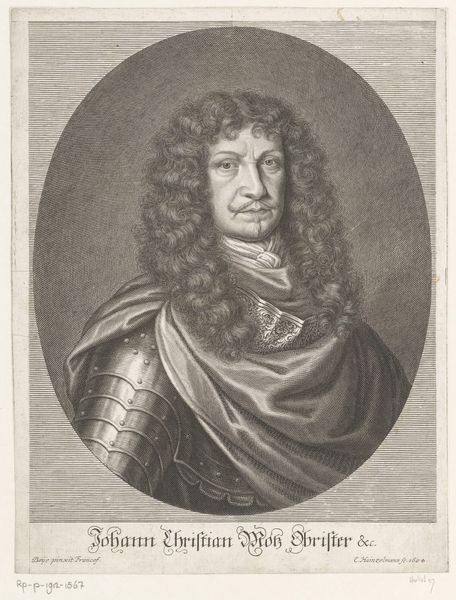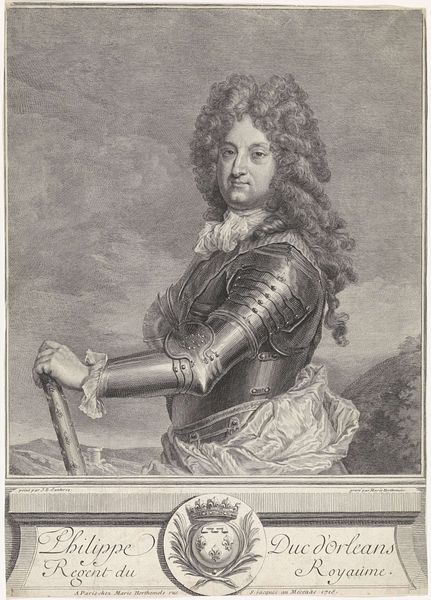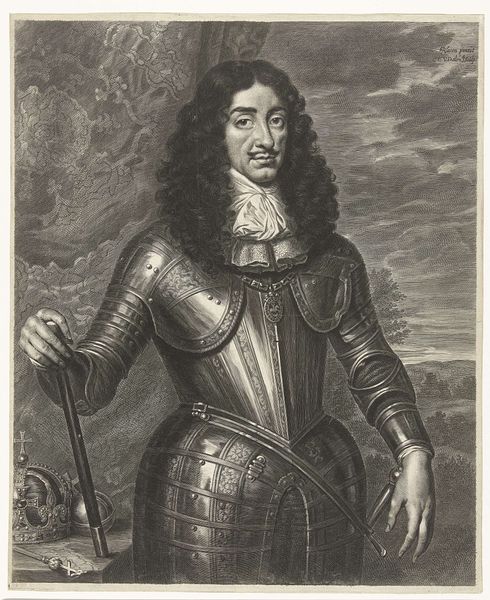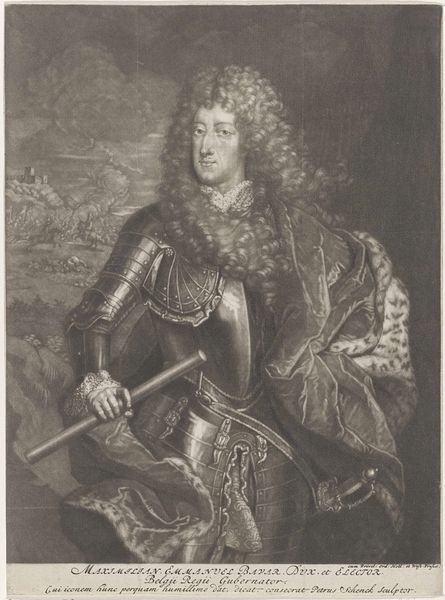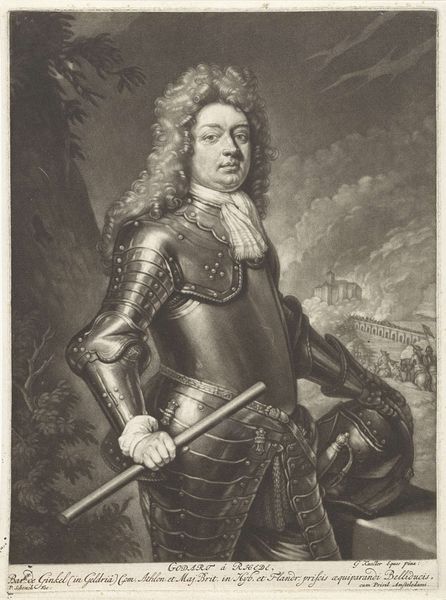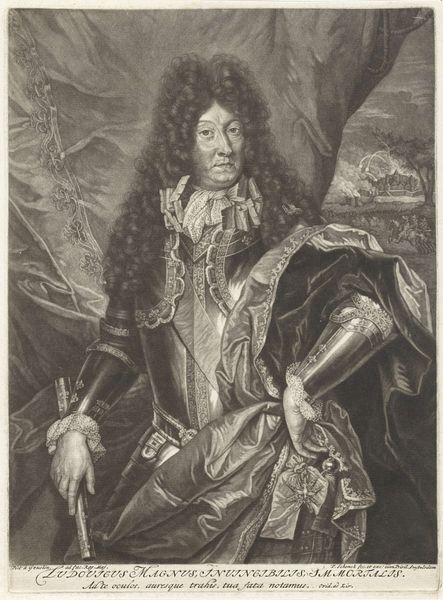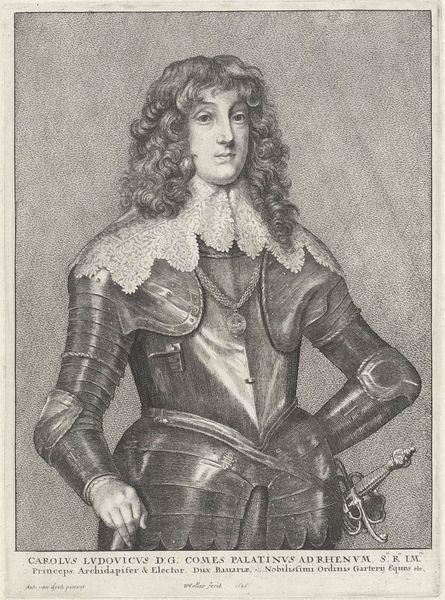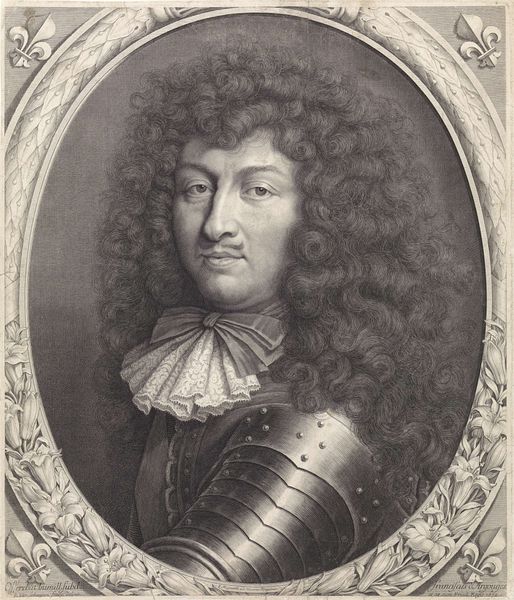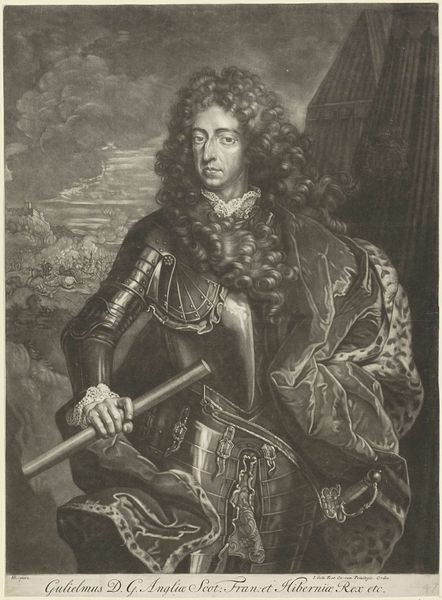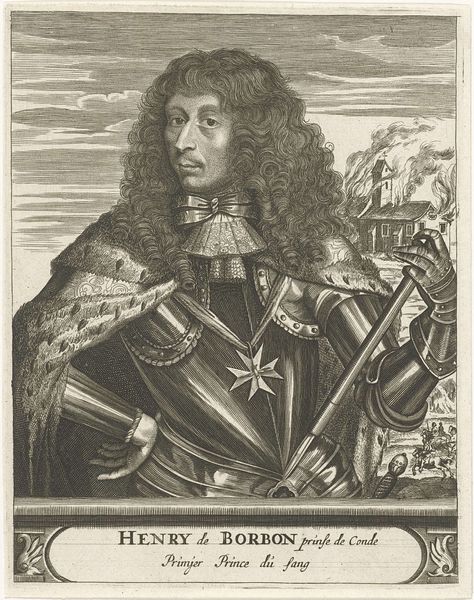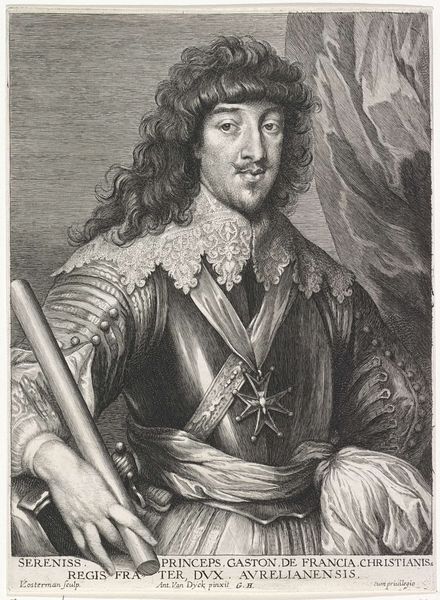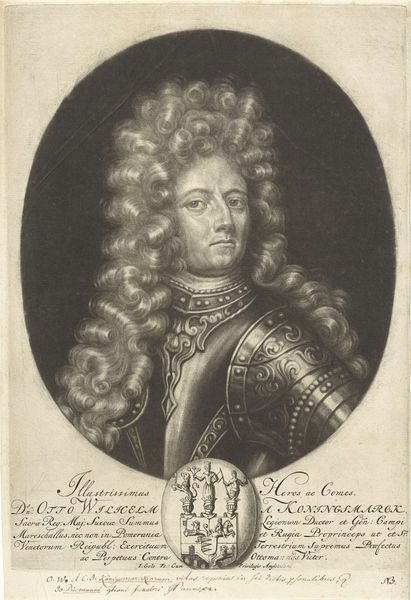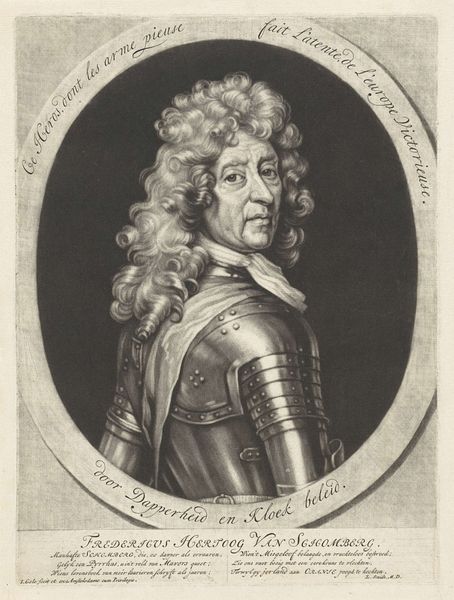
engraving
#
portrait
#
baroque
#
old engraving style
#
history-painting
#
academic-art
#
engraving
Dimensions: height 486 mm, width 368 mm
Copyright: Rijks Museum: Open Domain
Curator: This is Gérard Edelinck's "Portret van Lodewijk de XIV," dating roughly from 1666 to 1707. The artwork, held here at the Rijksmuseum, is an engraving. Editor: It's undeniably powerful. The intricacy of the armor and the king's wig are captivating. There’s almost a staged, theatrical quality to the scene that seems intentionally designed to convey authority. Curator: Indeed. Edelinck masterfully uses the engraving medium to broadcast Louis XIV's image, solidifying his brand of absolute monarchy. Consider the social and political context: printmaking allowed for unprecedented dissemination of propaganda. How does this artwork serve as a tool of power? Editor: The figure’s armour immediately projects strength, obscuring his vulnerability. But it's not just the armour, it’s the hair. That extravagant wig screams wealth and control, practically feminizing the king, making him seem simultaneously virile and androgynous which is…fascinating. He presents an interesting gender dynamic. Curator: That brings up another layer of analysis. By emphasizing the luxuriousness of the court—reflected here in the attire—Louis projects France as a cultural epicenter. Simultaneously, depicting him in armour ties him to a lineage of warrior-kings. What does that tell us about 17th century ideas of masculinity and kingship? How are the king’s authority and gender expression intertwined? Editor: You’re right. The art isn’t necessarily the propaganda; the culture of it, how it impacts its contemporary audience, that is the propaganda. Do we focus on the figure himself? Or the ideas about power and prestige circulating at the time of the engraving? Curator: Ultimately, this image highlights how visual culture reinforces power structures, both in Louis XIV's time and today. Editor: Yes, recognizing that this image did a lot to solidify gender and hierarchy, reminds us about who benefits from these constructs today, and who remains on the outside looking in.
Comments
No comments
Be the first to comment and join the conversation on the ultimate creative platform.
